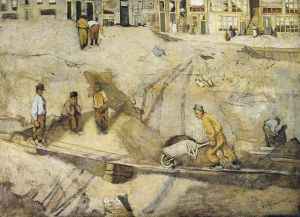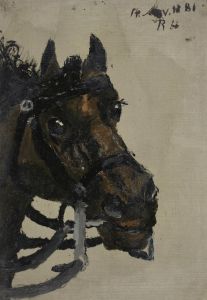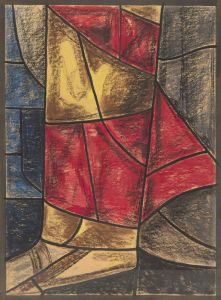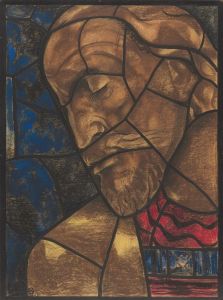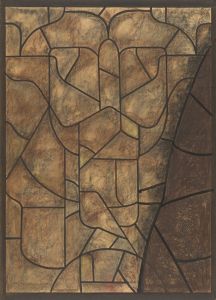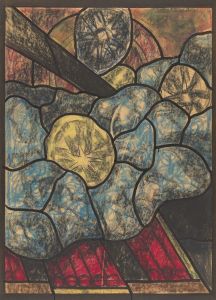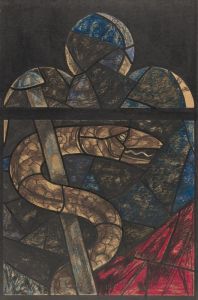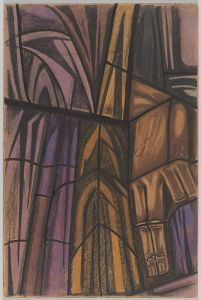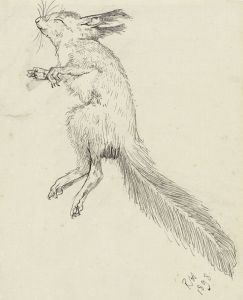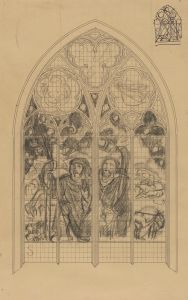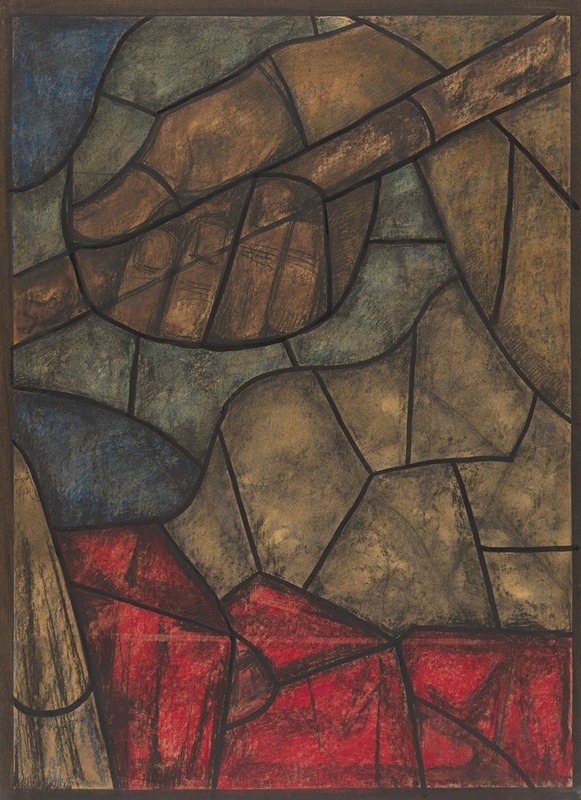
Ontwerp voor raam in het Noordertransept in de Dom te Utrecht 19
A hand-painted replica of Richard Nicolaüs Roland Holst’s masterpiece Ontwerp voor raam in het Noordertransept in de Dom te Utrecht 19, meticulously crafted by professional artists to capture the true essence of the original. Each piece is created with museum-quality canvas and rare mineral pigments, carefully painted by experienced artists with delicate brushstrokes and rich, layered colors to perfectly recreate the texture of the original artwork. Unlike machine-printed reproductions, this hand-painted version brings the painting to life, infused with the artist’s emotions and skill in every stroke. Whether for personal collection or home decoration, it instantly elevates the artistic atmosphere of any space.
Richard Nicolaüs Roland Holst was a prominent Dutch artist known for his contributions to the Arts and Crafts movement in the Netherlands. He was born on December 4, 1868, in Amsterdam and became a significant figure in the Dutch art scene during the late 19th and early 20th centuries. Roland Holst was a versatile artist, working in various mediums including painting, drawing, and designing stained glass windows. His work often reflected his interest in social issues and his commitment to the ideals of the Arts and Crafts movement, which emphasized craftsmanship and the integration of art into everyday life.
One of Roland Holst's notable works is the "Ontwerp voor raam in het Noordertransept in de Dom te Utrecht 19," which translates to "Design for a Window in the North Transept of the Cathedral in Utrecht 19." This work is a design for a stained glass window intended for the Dom Church, also known as St. Martin's Cathedral, in Utrecht, Netherlands. The Dom Church is a Gothic-style cathedral that has been a central landmark in Utrecht since its construction began in the 13th century. It is one of the most important churches in the Netherlands and has a rich history that includes serving as the cathedral of the Diocese of Utrecht.
Roland Holst's design for the window in the north transept of the Dom Church reflects his skill in creating intricate and meaningful stained glass art. Stained glass windows have been a significant aspect of Gothic architecture, serving both aesthetic and didactic purposes. They often depict biblical scenes, saints, and other religious iconography, allowing light to filter through in vibrant colors that enhance the spiritual atmosphere of the church interior.
While specific details about the imagery and themes of Roland Holst's design for this particular window are not widely documented, his work in stained glass typically incorporated symbolic and allegorical elements. His designs were known for their harmonious compositions and the use of color to convey mood and meaning. Roland Holst's stained glass works often drew inspiration from medieval art and literature, aligning with the broader Arts and Crafts movement's reverence for medieval craftsmanship and aesthetics.
Throughout his career, Roland Holst collaborated with various architects and craftsmen to bring his stained glass designs to life. His contributions to the Dom Church in Utrecht are part of a larger body of work that includes numerous stained glass windows in churches and public buildings across the Netherlands. Roland Holst's legacy as an artist is marked by his dedication to integrating art into public and sacred spaces, enriching the cultural and spiritual life of the communities he served.
Richard Nicolaüs Roland Holst passed away on December 31, 1938, leaving behind a significant body of work that continues to be appreciated for its artistic and historical value. His designs for stained glass windows, including the one for the Dom Church in Utrecht, remain a testament to his skill and vision as an artist committed to the ideals of beauty, craftsmanship, and social engagement.






